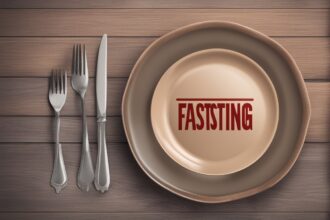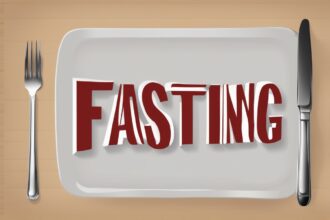Intermittent fasting (IF) has surged in popularity as a flexible and effective approach to weight loss, improved health, and better energy levels. However, with its rise, numerous myths and misunderstandings have emerged, leading to confusion about what intermittent fasting truly entails. In this post, we’ll dive deep into the common misconceptions about intermittent diets, debunking myths and providing clarity based on science and expert insights. Let’s separate fact from fiction and help you approach intermittent fasting with confidence.
1. Intermittent Fasting Means Starving Yourself
One of the most pervasive myths surrounding intermittent fasting is that it equates to starvation. This is far from the truth. Intermittent fasting is not about depriving yourself of food but rather about timing your meals within specific windows. For instance, the popular 16:8 method involves fasting for 16 hours and eating during an 8-hour window. During the eating window, you can consume a balanced diet with adequate calories to meet your nutritional needs.
The key difference between starvation and intermittent fasting is intent and control. Starvation implies a lack of access to food, often leading to nutrient deficiencies and health issues. In contrast, IF is a deliberate choice that, when done correctly, can support metabolic health and weight management. If you’re new to IF, start gradually and consult with a healthcare professional to ensure it suits your lifestyle.
2. Intermittent Fasting Causes Muscle Loss
Another common misconception about intermittent diets is that they inevitably lead to muscle loss. Many fear that fasting for extended periods will cause the body to break down muscle tissue for energy. However, research suggests that when done properly, intermittent fasting can preserve muscle mass, especially when paired with resistance training and adequate protein intake during eating windows.
During fasting, the body primarily uses stored fat for energy, thanks to hormonal changes like increased levels of growth hormone, which helps protect muscle tissue. For more insights on maintaining muscle while fasting, check out our detailed guide on Fasting and Fitness: How to Maintain Muscle Mass. The key is to avoid extreme calorie deficits and ensure your diet supports your fitness goals.
3. You Can Eat Anything During Eating Windows
A widespread misunderstanding is that intermittent fasting gives you a free pass to eat whatever you want during your eating windows. While IF focuses on when you eat rather than what you eat, the quality of your food still matters. Consuming highly processed, sugary, or calorie-dense foods can undermine the health benefits of fasting, such as improved insulin sensitivity and weight loss.
To maximize the benefits of intermittent fasting, prioritize whole, nutrient-dense foods like vegetables, lean proteins, healthy fats, and complex carbohydrates. For recipe ideas, explore our post on Healthy Fasting Meals for Beginners. Remember, IF is a tool, not a magic bullet—pair it with mindful eating for the best results.
4. Intermittent Fasting Slows Down Your Metabolism
Many believe that fasting for extended periods will slow down metabolism, making weight loss harder over time. This is one of the most common misconceptions about intermittent diets. In reality, short-term fasting can actually boost metabolic rate due to an increase in norepinephrine, a hormone that enhances fat burning.
Studies have shown that intermittent fasting does not negatively impact metabolism when total calorie intake remains adequate over time. However, prolonged fasting or extreme calorie restriction without proper planning can lead to metabolic slowdown. To avoid this, ensure you’re meeting your energy needs during eating windows and consider reading our guide on Boosting Metabolism While Fasting for practical tips.
5. Intermittent Fasting Is Unsuitable for Women
There’s a persistent myth that intermittent fasting is harmful or unsuitable for women due to potential hormonal disruptions. While it’s true that women may need to approach fasting with caution—especially during pregnancy, breastfeeding, or if they have a history of eating disorders—there’s no evidence to suggest that IF is inherently dangerous for women when done thoughtfully.
Some women report benefits like improved energy and weight management with IF, while others may need to adjust their fasting schedules around their menstrual cycles to avoid stress on the body. Listening to your body and consulting with a healthcare provider is crucial. For more tailored advice, check out our article on Intermittent Fasting for Women: What You Need to Know.
6. Intermittent Fasting Is a Quick Fix for Weight Loss
Lastly, many people mistakenly view intermittent fasting as a quick fix or fad diet for rapid weight loss. While IF can be an effective strategy for shedding pounds, it’s not a one-size-fits-all solution or a substitute for sustainable lifestyle changes. Weight loss with IF still depends on creating a calorie deficit over time, and results vary based on individual factors like activity levels and dietary habits.
Approaching IF as a long-term tool rather than a temporary diet can help set realistic expectations. Consistency and patience are key. If you’re looking for ways to integrate IF into your routine, our post on Long-Term Fasting Strategies for Success offers actionable advice to maintain progress without burnout.
Disclaimer: The information provided in this article is for educational purposes only and should not be considered medical advice. Intermittent fasting may not be suitable for everyone, including individuals with certain medical conditions, pregnant or breastfeeding women, or those with a history of eating disorders. Always consult with a healthcare professional or registered dietitian before starting any new diet or fasting regimen to ensure it aligns with your individual health needs.
References
- Harvard Health Publishing: Intermittent Fasting: Surprising Update
- National Center for Biotechnology Information: Effects of Intermittent Fasting on Health, Aging, and Disease
- Mayo Clinic: Intermittent Fasting FAQ
- WebMD: What Is Intermittent Fasting?
- Johns Hopkins Medicine: Intermittent Fasting: What Is It, and How Does It Work?
This content is for informational purposes only and not a substitute for professional advice.






